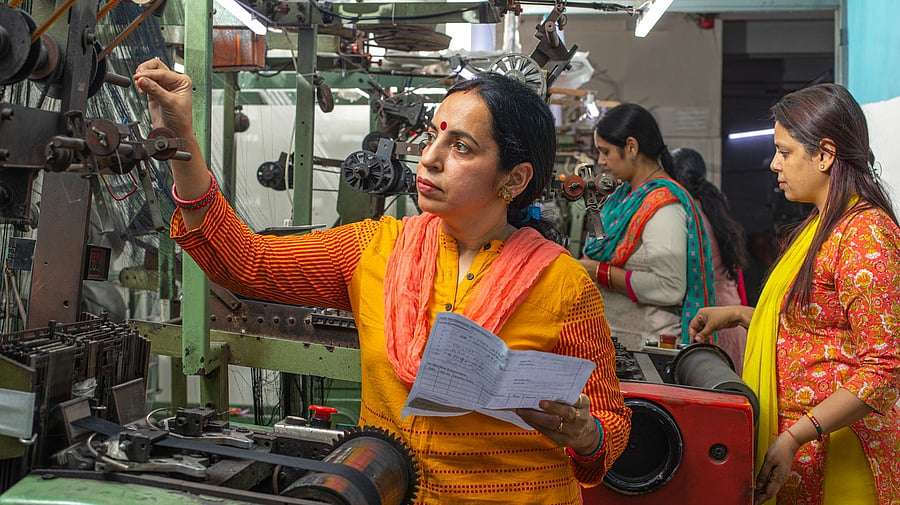
Indian women working blue-collar jobs.
Credit: iStock Photo
Bengaluru: Women in India’s blue-collar workforce hold just one in five jobs, according to a survey-based report by hiring platform Indeed out on Thursday. Challenges ranging from wage disparities to poor sanitation continue to create barriers for women’s participation.
About 78 per cent of employers are planning to hire more women in blue-collar roles in 2025, marking a 5 per cent increase in hiring intent compared to the 73 per cent in 2024. Despite the high percentage of employers expressing this intent in 2024, female participation remained stagnant at 20 per cent.
Some industries are faring better, but still see a low rate of women’s representation. Retail (32 per cent), healthcare and pharmaceuticals (32 per cent), construction and real estate (30 per cent), and travel and hospitality (28%) see the highest percentage of women representation.
Conversely, telecommunications, banking, financial services, and insurance (BFSI), and IT and IT enabled services (ITeS) see female participation below 10%.
Over half of the surveyed women cited a lack of flexible shifts as a barrier. Blue-collar jobs often demand strict shift timings, making it difficult for women to balance family responsibilities.
Another big challenge pointed out was wage inequality. About 42 per cent of women believe they are underpaid compared to their male counterparts, with fewer opportunities for promotions.
In industries like automobile, FMCG, and travel and hospitality, over half of the women surveyed feel their wages do not reflect their work.
There was also a lack of opportunities for relevant training and education that the surveyed women highlighted.
Even as 78 per cent of employers express intent to hire more women in blue-collar roles in 2025, they cited a ‘limited talent pool’ and high attrition as obstacles.
Demand is projected to exceed 2 million blue-collar job seekers in 2025. The measure of progress will not just be how many women join the workforce, but how industries take decisive action to break systemic barriers, ensure fair wages, and provide women with flexibility and career mobility, said the report.
This survey covered 4,000 employers and employees (blue-collar women only) across 14 industries in India including automobile, BFSI, construction and real estate, consumer durables, e-commerce, FMCG, healthcare and pharma, IT.